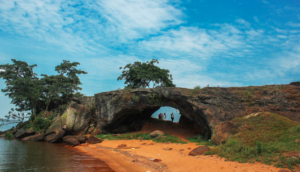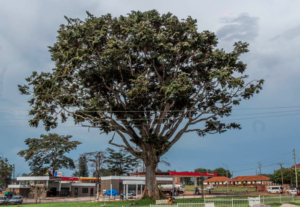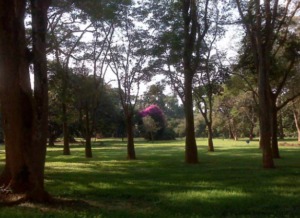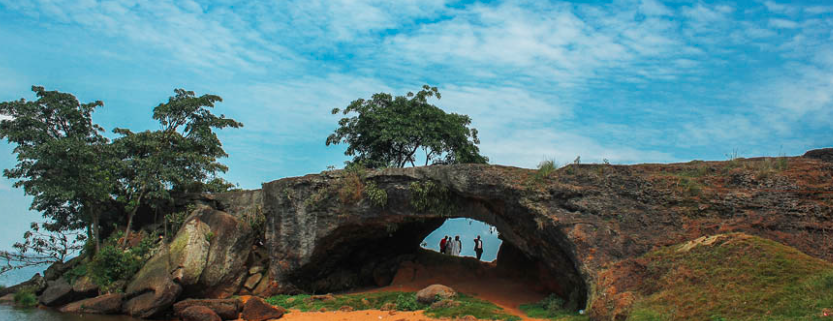Entebbe Heritage Sites
Entebbe Heritage Sites
Entebbe Heritage Sites : The word Entebbe came from the Luganda language “entebe” meaning “chair or seat”. Initially, Entebbe was a cultural site for the Mamba clan deriving the Luganda phrase ‘Entebe za Mugala’. Literally meaning the ‘Headquarters’ where the Baganda chief sat to adjudicate legal cases. Entebbe is located on a Lake Victoria peninsula, a few metres North of the Equator. It was capital of Uganda during the colonial era and became a British colonial administrative and commercial center in 1893.
Heritage sites in Entebbe
Entebbe Golf Club
After the Entebbe Golf Course was founded in 190 this clubhouse was constructed and later expanded. It was to act as a venue in which the British colonial administrators and expatriate community could indulge in leisure activities. In fact, it still contains some original furniture and fittings, and plays host to the Uganda Open golf tournament.
Entebe Za Mugula
This sacred site is where Chief Mugula Bukulubwawadda sat in a stone seat to preside over judicial cases and village meetings in the 19th century hence, the name “Mugula’s Seat” – Entebe Za Mugula. It gave Entebbe its name, when early British visitors failed to pronounce the full name correctly. The cave, containing a shrine, and the nearby rock islands, are still places of pilgrimage for some Baganda who wish to pay homage to the spirits they believe reside in Lake Victoria.
Bugonga Church
(Entebbe Catholic Parish)
One of the oldest permanent catholic churches in Uganda built in 1902. Additionally, this church marked the spot where the first catholic missionaries camped and prepared for their meeting with Kabaka Muteesa in 1899. In fact, the ancient tree next to the church is said to have grown out a tent peg placed by the missionaries.
Chadwick Namatte Primary School
This historic school was founded as Entebbe central school by Walter Chadwick (1874-1917), an Irish Anglican Missionary. It is architecturally notable for both its original building (1910) and later extension dating from 1940. In addition, it is one of the earliest examples of schools set up to educate Africans.
Entebbe Post Office
Built between 1900-1910, Post office was among the first buildings constructed by the colonial government. Besides, it still contains a number of original features such as its individual post boxes on the verandah.
Independence Tree
Earlier known as the Freedom Tree, this tree became famous as the site of rallies in the 1950s. It was addressed by nationalist leaders such as I. K. Musaazi and J. W. Kiwanuka, prior to Uganda’s independence in 1962. However, today it acts as a location for many community functions and markets.
St John’s Church
Prominent along the main Entebbe–Kampala highway, this church’s octagonal bell tower gives it a fort-like appearance. Built in 1939 to replace an earlier structure, St John’s has served Entebbe’s Anglican community for almost 80 years.
The secretariat
(NARO building)
This is one of the grandest colonial administrative buildings in Entebbe, befitting its role as the Secretariat to the Governor’s Office. It is also and where the Legislative Council (Leg Co) – Uganda’s first parliament held its meetings from 1921 until 1955 when it moved to Kampala. At the present time, this place is housing National Agricultural Research Organization (NARO) head offices in Entebbe
Entebbe Old Airport Tower
Entebbe Old Airport Tower (1952) was Commissioned by colonial Governor Sir John Hall. In fact, this building is best known for being the setting of the 1976 hostage situation. This is when Israeli Defence Forces came to rescue their compatriots who had been taken hostage by Palestinian militants. Interestingly, it still bears witness to this event whereby the bullet holes are still in its walls.
 Entebbe Botanical Gardens
Entebbe Botanical Gardens
This is the earliest public gardens in Uganda (1898) and was originally set up for botanical research. These gardens are some of the oldest in Africa as well as the earliest public gardens in Uganda. Originally set up for botanical research, the gardens were the location for filming the movie ‘Tarzan’s Hidden Jungle’ in 1954.
Stanbic Bank
This historic bank premises stands proudly on Portal Avenue. It generally housed the Uganda Commercial Bank from the 1960s-1986, when it was acquired by Stanbic Bank.
Maps and Surveys Building
This building was home to the ministry which kept records of all maps and surveys done within Uganda in 1930-1951. Today, it serves a similar purpose, being headquarters to the Department for Maps and Surveying under the Ministry of Lands, Urban development and Surveying. Furthermore, the building contains stores for photographic chemicals, printing and drawing rooms, and dark rooms. Some antique equipment can still be found on site, despite being obsolete.
Ministry of Agriculture Building (1927)
This attractive government office still houses the same department for which it was constructed. Its high ceilings, verandahs and large windows are representative of colonial architecture in this period. As a matter of fact, they were designed to maximize air flow, and create shade from the sun and shelter from the rain.
Lake Victoria Hotel
Built in 1948, this handsome and well-preserved hotel is most famous for hosting Queen Elizabeth II during her visit to Uganda in 1958. However, it continues to be a popular location for luxury holidays, weddings and VIP events.










Leave a Reply
Want to join the discussion?Feel free to contribute!